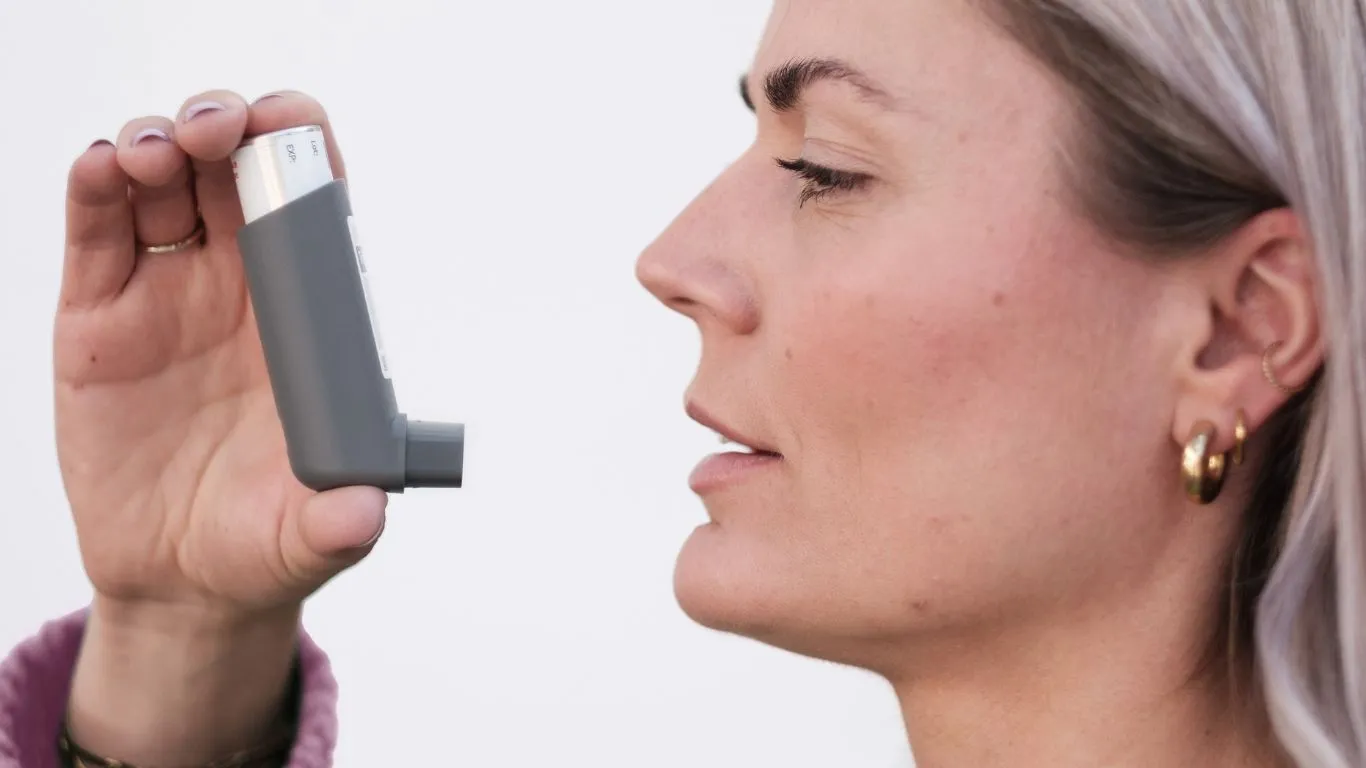Must-Know Tips for Running Outdoors with Asthma Safely & Strong
Let me tell you, as someone who not only treats asthma but also enjoys hitting the pavement, running outdoors with asthma isn’t always a walk in the park. In fact, it used to be downright intimidating. But the good news? It doesn’t have to be. With the right approach, you can absolutely enjoy your miles—even if you’re managing asthma. This article is packed with real-world tips for running outdoors with asthma that I’ve learned both from clinical practice and my own sneakers-on-the-ground experience.
Understand Your Asthma Triggers Before You Lace Up

Before diving into mile splits and running shoes, let’s talk about something crucial: your specific asthma triggers. Not all asthma is created equal. Some people get triggered by pollen, others by cold air, and some react to pollutants or even strong emotions (yes, seriously).
Common Outdoor Triggers to Watch Out For
- Pollen: Especially during spring and fall. If you’re anything like me, tree pollen used to make my lungs feel like I’d run a marathon—after one block.
- Cold Air: It can tighten the airways fast. A neck gaiter or mask helps warm up the air before it hits your lungs.
- Air Pollution: Check your local AQI (Air Quality Index). I use an app before every run.
- High Humidity: It may feel heavy to breathe. Pick early mornings or low-humidity days.
Pro Tip from My Clinic: I often advise my patients to start an asthma journal. Track your runs, weather conditions, and symptoms. Over time, patterns will pop up, helping you run smarter—not just harder.
Pre-Run Prep: Don’t Skip It

This might sound obvious, but preparation is everything when running with asthma. It’s not just about stretching your quads—your lungs need to warm up too.
Here’s My Go-To Routine Before a Run
- Take Your Inhaler (If Prescribed): I personally use a bronchodilator about 15-20 minutes before I run. Always per your provider’s recommendation, of course.
- Warm Up Slowly: Ease into movement. A brisk walk, then a jog, gradually increasing intensity. This can reduce the chance of exercise-induced bronchospasm.
- Practice Pursed-Lip Breathing: It sounds weird at first, but this technique helps control exhalation and keep your airways open. I swear by it when I feel that tightness creeping in.
And yes, I always carry my rescue inhaler—even on short runs. I recommend using a small running belt or pocket in your leggings. It’s not negotiable.
Dress for Success: What You Wear Matters

We all love a cute running outfit, but if you have asthma, what you wear can impact how you breathe outdoors. Trust me—I learned this the hard way after going out underdressed on a frosty morning and wheezing all the way back.
Outdoor Running Gear Tips for Asthma Warriors
- Layer Up: Especially in cold or unpredictable weather. Breathable, moisture-wicking fabrics are a must.
- Face Coverings: A fleece buff or scarf can help humidify and warm the air before it enters your lungs.
- Sunglasses and Hats: Help reduce pollen exposure around your eyes and nose.
And ladies—don’t forget a good, supportive sports bra. Not an asthma tip per se, but your lungs (and shoulders) will thank you later.
Choose the Right Time and Place to Run

Let’s talk about timing—because when you run can make a huge difference if you’ve got asthma. Personally, I learned to avoid late afternoon runs during peak pollen season unless I wanted a side of wheezing with my workout. Timing and location might not seem like a big deal at first, but trust me, they matter more than you think.
Best Times for Outdoor Running (When You Have Asthma)
- Early Mornings: Especially in summer, the air is cooler and pollution levels are lower.
- After a Rain Shower: Rain helps clear out pollen and dust. Some of my best runs have been post-rain—even if my ponytail ends up frizzy!
- Avoid Rush Hour: That traffic exhaust? It’s not doing your lungs any favors. Opt for quieter, off-peak times.
As for where to run, flat trails or parks away from busy roads are golden. I usually stick to green spaces that don’t kick up too much dust or smog. If you’re in the city, try to find routes with plenty of trees and minimal car traffic.
Hydration and Nutrition: Don’t Sleep on This

Okay, let’s be real—hydration and fueling often get overlooked, especially if you’re just squeezing in a quick 5K. But staying hydrated and well-fed actually plays a role in keeping asthma symptoms at bay. Dehydrated airways = cranky lungs. Been there, done that.
Simple Nutrition and Hydration Tips That Help
- Hydrate Before and After: Sip water before your run and rehydrate afterward. If it’s hot out, I’ll even add a pinch of salt or electrolytes.
- Snack Smart: Running on an empty stomach can trigger symptoms in some folks. I usually grab a banana or half an energy bar about 30 minutes before lacing up.
- Avoid Mucus-Producing Foods: This one’s kind of personal—some of my patients swear dairy makes their breathing worse before a run. Might be worth experimenting.
It’s all about experimenting and listening to your body. What fuels me best might not work for you, but these tips are a great starting point.
Track Your Symptoms (and Wins!)

Here’s something I always tell my patients and do myself: track your progress. You don’t need a fancy fitness watch (though I do love mine)—just a simple notebook or app will do. Document how your breathing felt, if you needed your inhaler, what the weather was like, and how far you went.
Why This Matters (Big Time)
- Spot Trends: Maybe your asthma flares up every time it’s super windy or when pollen is high. This helps you plan better.
- Talk to Your Provider: With symptom tracking, your care team (including folks like me!) can make smarter tweaks to your treatment plan.
- Celebrate Progress: One of my patients used to stop every few blocks to catch her breath. Now she crushes three miles nonstop. Seeing your own progress in writing is super motivating.
Whether you’re aiming for a new PR or just trying to get back into a regular rhythm, tracking your experience makes it real—and rewarding.
Know When to Hit Pause
This one’s tough, especially for us Type A runners who hate missing a day. But if you’ve got asthma, sometimes skipping a run is actually the smartest move you can make. If your chest feels tight before you even leave the house, or you’re already using your rescue inhaler more than usual, take the day off. Seriously.
Some red flags I personally use (and advise my patients to watch for):
- Wheezing or coughing before the run even starts
- Waking up at night short of breath
- Using a rescue inhaler more than twice during a single run
Your body’s not being lazy—it’s talking to you. Rest now, and you’ll bounce back stronger (and safer) next time.
Build Up Your Endurance—Gradually and Safely

One of the biggest mistakes I made early on (and I see this in patients too) was trying to go too hard, too soon. When you’re managing asthma, consistency beats intensity every time. You’re not just training your legs—you’re training your lungs too.
When I first started running regularly again after an asthma flare, I couldn’t even get through a mile without stopping. But over time, I found a rhythm by easing into things. My mantra became: slow is still progress.
Tips for Building Asthma-Safe Running Endurance
- Follow the 10% Rule: Only increase your distance or intensity by 10% each week. Pushing too fast can lead to overexertion or asthma flare-ups.
- Incorporate Walk-Run Intervals: I still use these on tough days. Think 3 minutes of jogging, 1 minute walking.
- Mix in Low-Impact Cardio: On days when my breathing feels iffy, I’ll swap running for a brisk walk, cycling, or even swimming (which is great for asthma).
Trust me, your lungs will thank you for being patient. And when you do hit that milestone distance or pace? It feels even better knowing you got there smart and safe.
Mental Health and Motivation: The Unsung Heroes

Here’s something I don’t think we talk about enough: the mental side of running with asthma. It can be frustrating. Some days, your body feels strong, but your breathing just won’t cooperate. It’s easy to feel defeated or even a little scared. I’ve been there, standing on the sidewalk trying to decide if I should push through or turn around.
That’s why staying motivated, supported, and mentally grounded is just as crucial as your inhaler routine. Running is just as much mental conditioning as it is physical conditioning—especially when you’re managing a chronic condition.
My Go-To Mental Boosts
- Set Tiny, Achievable Goals: Not every run has to be a PR. Some days, my goal is just to finish without using my inhaler. That’s a win in my book.
- Use Music or Podcasts: Distraction can help. I’ve got a playlist labeled “Breathe Easy Bops” full of feel-good tracks for the tough days.
- Find a Buddy: Whether it’s a fellow runner or someone cheering you on from the sidelines, support makes a world of difference.
And if you need a rest day? Take it. Your lungs (and mind) need those too.
When to Talk to a Healthcare Provider
Okay, you knew this part was coming—I’m a nurse practitioner after all! If you’re finding that you’re constantly wheezing during runs, waking up coughing at night, or needing your rescue inhaler more than twice a week, that’s your cue to talk to your provider. Your asthma may not be as controlled as it could be, and there might be better options out there for you.
Don’t just “power through” because you think it’s normal. Running with asthma should be challenging in a good way—not scary or unsafe.
Here’s When You Definitely Need a Check-In
- Using your rescue inhaler before every run
- Having frequent chest tightness or coughing post-run
- Feeling anxious or fearful before runs due to breathing issues
Getting evaluated doesn’t mean you need to stop running. In fact, with the right meds and strategies, you may find running becomes easier than ever. I’ve helped so many patients improve their exercise tolerance just by tweaking their treatment plan or timing.
References
- Asthma and Allergy Foundation of America
- American Lung Association
- American Gastroenterological Association
- Centers for Disease Control and Prevention
Disclaimer
This article is for informational purposes only and should not be used as a substitute for medical advice, diagnosis, or treatment. Always consult your healthcare provider before beginning any new fitness program, especially if you have a chronic health condition like asthma.

Bianca Nala is a compassionate Nurse Practitioner with a strong background in primary and respiratory care. As a health writer for Healthusias.com, she combines her clinical expertise with a talent for clear, relatable storytelling to help readers better understand their health. Bianca focuses on topics like asthma, COPD, chronic cough, and overall lung health, aiming to simplify complex medical topics without losing accuracy. Whether she’s treating patients or writing articles, Bianca is driven by a single goal: making quality healthcare knowledge accessible to everyone.






